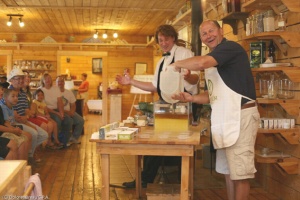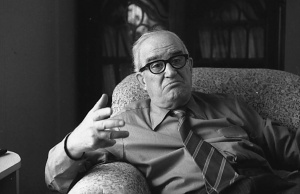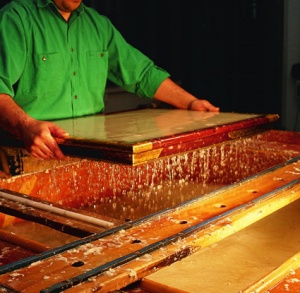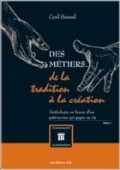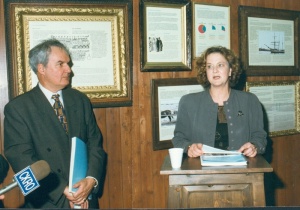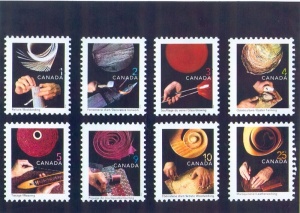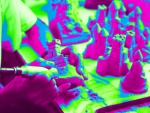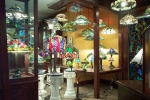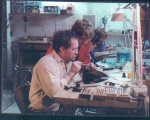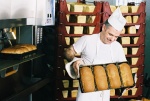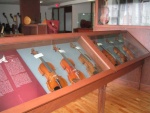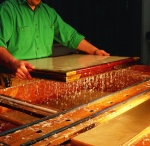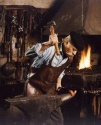Economuseums: Keeping Traditional Crafts and Know-How Alive in French-Speaking Canada
par Simard, Cyril and Soucie, Anne
The Economuseum network’s mission is to promote and sustain traditional crafts and know-how. Through its combined focus on culture (presenting traditional crafts and trades), education (passing on traditional knowledge) and business (supporting artisanal business ventures), the network helps foster cultural diversity in the regions, preserve living heritage and promote sustainable development. Inspired by Félix Antoine Savard’s Papeterie Saint-Gilles in the Charlevoix region of Quebec, the network was created ten years after his death. Today it boasts fifty members in Quebec and the Atlantic provinces and is attracting new members from across Canada and around the world.
Félix Antoine Savard, Poet and Cultural Entrepreneur
Félix Antoine Savard was a true cultural entrepreneur avant la lettre. After completing his novel Menaud maître-draveur in 1937, founding Université Laval’s folklore archives in 1944, and completing extended fieldwork on folklore with Luc Lacoursière in the early 1950s (while serving as dean of Laval’s Faculty of Letters), Savard published Le Barachois in 1959. This deeply poetic work is a veritable hymn to Acadia, where “fishermen, ship’s carpenters, net-menders, clam diggers, peat cutters and storytellers” (NOTE 1) take centre stage.
The true, the beautiful and the good, wherever they be found, are humanity’s treasure.
This fraternal esteem for others has never prevented anyone from being true to self or cultivating their individuality. But if we take nature’s cue and develop a craft that expresses what we are, what we have been doing here for three centuries now, then— I can’t stress it enough—it is our responsibility to nourish the hearts and minds of young people with the best of what our homeland has to offer.
In 1964 Félix-Antoine Savard founded Papeterie Saint-Gilles with his friend Marc Donohue, “to honour the word.” He incorporated native wildflowers into the pulp used to make his paper and kindled a missionary zeal in his young protégés: to pass on traditional crafts and know-how. It was his deep-seated admiration for craftspeople and artisans that inspired him to join their ranks by becoming a papermaker. Ten years later, his successor launched a movement that would help keep traditional crafts and know-how alive, not only in Savard’s beloved Quebec and Acadia, but in other parts of the world as well.
Savard’s patronage kept Papeterie Saint-Gilles running until his death in 1982. Visitors were greeted at the entrance with these words:
Je voudrais, en particulier, bien préciser ce que nous entendons par Musée. C'est un grand mot qui a besoin d'être épousseté. Je voudrais bien définir ce que j'entends par un musée d'art populaire et ce que nous en voulons faire : un centre vivant et un foyer d'éducation .
(Translation: I would like to be very clear about what we mean by “museum.” This word can mean many different things and we need to dust it off a bit. I want to clarify what I mean by a “museum of traditional crafts” and what we want to make of it: a living centre of practice and a place of learning.) - Félix Antoine Savard
Savard’s wish would come true.
The economuseum concept was developed to ensure the Papeterie’s survival and perpetuate the legacy of Félix Antoine Savard’s passion for traditional crafts. From 1984 to 1988 the museum served as an incubator for what would become a prototype for a whole new type of business. The concept—a museum doubling as a functioning business—caught on and inspired others to follow its example. In 1988 Canada’s first economuseum was born, a marriage of culture and business (NOTE 2).
A Groundbreaking Concept
The economuseum concept was first elaborated in the network founder’s Ph.D. dissertation (NOTE 3). It is defined as a craft business open to the public that features educational materials designed to introduce the artisan and his or her craft and promote cultural tourism. To meet these objectives, economuseums tell the story of their cultural history and foundations, open their workshops to the public and display traditional and contemporary examples of their craft. A boutique is the final element and must pay for the whole operation.
Economuseums in Quebec
After a few pilot projects, Fondation des économusées was created at the 1992 International Conference on Monuments and Sites (ICOMOS) in Quebec City. Its objective was to develop a network of economuseums in the province of Quebec and ensure they stayed true to the concept.
Today the Quebec network comprises 35 economuseums in 13 different regions. Total annual sales are around $30 million and the number of visitors close to 600,000 (NOTE 4). The 2003 book Des métiers... de la tradition à la creation sums up the wealth of knowledge held within the economuseum network. Sixty contributors—businesspeople, academics, artisans from wide-ranging disciplines and backgrounds—situate the economuseum experience within a wider context, at the crossroads of cultural diversity and globalization. The book is divided into six major themes that cover the network’s main areas of activity (NOTE 5).
- Preserving memory and identity
- Promoting traditional crafts and techniques
- Celebrating culture and heritage
- Striking a balance between culture, tourism and business
- Building a model of cultural entrepreneurship
- Telling the story of intangible heritage
Bringing Acadia into the Fold
In 1996 Quebec’s Economuseum Society Network was formed to serve the province’s 13 economuseums. That same year Société Nationale de l’Acadie (SNA) recognized the concept’s potential for business and tourism at its annual general meeting in Saint John’s, Newfoundland, where it was resolved “that the SNA enter into discussions with Fondation des Économusées du Québec to examine the possibility of setting up, pilot projects in Acadia in a context of collaboration and partnership.” (NOTE 6)
The first economuseum pilot project in Atlantic Canada was launched in Caraquet, New Brunswick, at the Dugas oyster farm, a family business handed down from father to son, where traditional techniques and know-how had been lovingly preserved. The new economuseum opened its doors on May 18, 1997, with help from the Quebec Economuseum Society Network and the backing of major partners like Société nationale de l'Acadie (SNA), the Department of Canadian Heritage, Human Resources Development Canada, Atlantic Canada Opportunities Agency (ACOA) and Quebec’s Atlantic Provinces Office.
The Atlantic Economuseum Corporation was founded in 2001. Today, it represents 17 different economuseums scattered throughout the four Atlantic provinces, capturing the diversity of this large area. The corporation publishes a regular newsletter (NOTE 7).
A Thriving Network Passing On Traditional Know-how
Today the renamed and restructured Economuseum Society Network (SRÉ) works with a host of new partners. In 2005 the Ontario Economuseum Society grew out of the rich loam of Franco-Ontarian culture. Then in April 2008, SRÉ signed an agreement to set up an economuseum network in 5 northern European nations—Norway, Iceland, Northern Ireland, Republic of Ireland and Faroe Islands—an initiative partially funded by the EU. At an official ceremony on July 1, 2009, the first of a planned cluster of 12 European economuseums was opened in Aurland near Bergen, Norway. This expansion project was carried out in collaboration with Université Laval’s UNESCO Chair in Cultural Heritage.
As these developments show, the economuseum concept, which grew from origins in Quebec ethnology, can be adapted and adopted anywhere. Applying the concept is no small matter, however: qualified experts, time, dedication and respect for cultural identity are needed.
Today the economuseum network is reputed for its ability to foster a sense of pride and belonging among artisans in the regions. The concept allows working artisans to earn a living from the craft they love and to share it with an increasingly well-informed public interested in knowing where the goods they purchase come from and enjoying the best of what traditional methods offer. In a globalized world of mass-produced products with little intrinsic meaning, economuseums help promote responsible cultural tourism. The encounter of objects, actions and words in an economuseum is in a real sense exactly what UNESCO means when it calls for the marriage of tangible and intangible heritage in recent conventions on cultural diversity.
The economuseum concept was singled out as one of the top three experiments promoting cultural tourism by Indrasen Vencatachellum, chief of the Arts, Crafts and Design Section at UNESCO in Paris, during the 2004 general assembly of the World Crafts Council in Greece.
Artisans at work: an innovative concept to develop the links between crafts and cultural tourists is that of the ECONOMUSEUMs launched since 1997 in Canada-Quebec. The artisan’s workshop is the focal point and is accompanied by areas for the interpretation of the production. These areas are designed to explain to visitors of all ages both the techniques and the production process, so enabling them to compare the traditional product with the contemporary vision. The sales of products on-site ensure the financial independence of the ECONOMUSEUMS while enabling visitors to obtain both an experience and a product. This experience has proved so popular with tourists that, since 2000, regional societies have been created to promote the concept outside Quebec and gradually outside Canada, with the establishment in the long run of an International Network of ECONOMUSEUMS (see www.economusees.com) (NOTE 8).
This tribute ably summarizes the economuseum’s ability to breathe new life into our traditions and foster responsible creativity, now and in the future.
Cyril Simard
Founding president of the ECONOMUSEUM Society Network
With Anne Soucie, president, Atlantic ECONOMUSEUM Corporation
NOTES
NOTE 1: Marcotte, Gilles, Lectures, vol. XII (1966).
NOTE 2: Simard, Cyril, Les papiers Saint-Gilles, héritage de Félix-Antoine Savard. Québec: Presses de l'Université Laval, 1988.
NOTE 3: Simard, Cyril, L'Économuséologie : essai d'ethnologie appliquée. Ph.D. Dissertation. Quebec City, Université Laval, 1986.
NOTE 4: Cyril Simard, L'Économusée : comment rentabiliser une entreprise culturelle. Montréal: CEC, 1989.
NOTE 5: Quebec ECONOMUSEUM Society: www.economusee.com. Simard, Cyril, Des métiers... de la tradition à la création - Anthologie en faveur d'un patrimoine qui gagne sa vie. Quebec City: Éditions GID, 2003.
NOTE 6: Achives of the Atlantic ECONOMUSEUM Corporation
NOTE 7: www.lartisanaloeuvre.ca
NOTE 8: "Crafts and Tourism", Presentation by Indrasen Vencatachellum (UNESCO) at the general assembly of the World Crafts Council (Metsovo, Greece, June 3, 2004). Quoted in United Nations World Tourism Organization (UNTO) Tourism and Handicrafts: A Report on the International Conference on Tourism and Handicrafts. Madrid: UNTWO, 2008.
Additional DocumentsSome documents require an additional plugin to be consulted
Images
-
 Cassis Mona et filles
Cassis Mona et filles
, Île d'Orléans... -
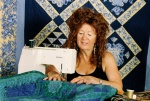 Courtepointière
Courtepointière
-
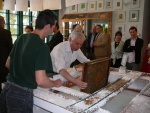 Démonstration de fabr
Démonstration de fabr
ication de papi... -
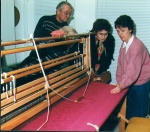 Démonstration de tiss
Démonstration de tiss
age
-
 Des métiers... de la
Des métiers... de la
tradition à la ... -
 Domaine Acer
Domaine Acer
-
 Ébéniste au travail
Ébéniste au travail
-
 ÉCONOMUSÉE de l'herbo
ÉCONOMUSÉE de l'herbo
risterie
-
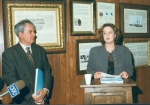 Inauguration du premi
Inauguration du premi
er ÉCONOMUSÉE d... -
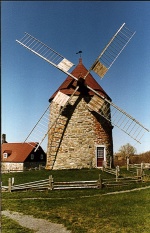 Les moulins de L'Isle
Les moulins de L'Isle
-aux-Coudres -
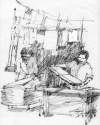 Papeterie Saint-Gille
Papeterie Saint-Gille
s -
 Porcelaines Bousquet
Porcelaines Bousquet
-
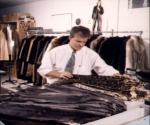 Richard Robitaille fo
Richard Robitaille fo
urrure -
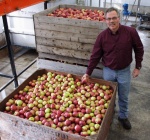 Robert Bourgeois, pom
Robert Bourgeois, pom
miculteur -
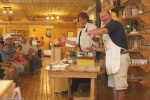 Savonnerie Olivier -
Savonnerie Olivier -
Nouveau-Brunswi... -
 Sculpture sur bois, A
Sculpture sur bois, A
telier Paré
-
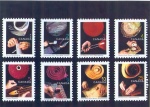 Série de timbres « Ma
Série de timbres « Ma
ins de maître »... -
 Soufflage de verre
Soufflage de verre
-
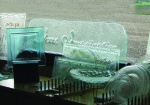 Verre thermoformé
Verre thermoformé
-
 Vignoble de l'Orpaill
Vignoble de l'Orpaill
eur

